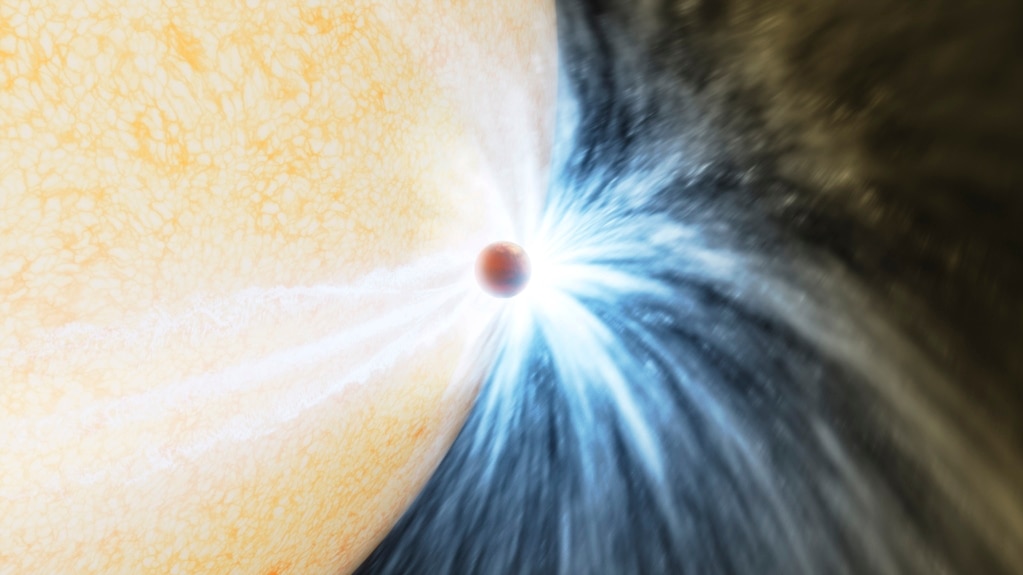Scientists say they have observed a dying star swallowing a planet for the first time.
Astronomers recently reported the observation of what appeared to be a large gas planet being eaten up by its aging star. The team said the sun-like star had been expanding for a very long time and finally got so big that it swallowed the nearby planet.
The researchers who made the observations said the star is in our Milky Way galaxy, about 12,000 light years from Earth. A light year is the distance light travels in a year – about 9.5 trillion kilometers. The findings were recently reported in a study published in Nature.
Most planets are believed to meet the end of their life when the star they are orbiting runs out of energy. This process causes the star to turn into a “red giant” that grows very large. The star can then swallow up the planet, and anything else that nears it.
The scientists say the planet’s destruction happened between 10,000 and 15,000 years ago near the Aquila constellation. At that time, the star was around 10 billion years old. The team said the swallowing event created a hot explosion of light, followed by a large release of dust that shot out into space.
Kishalay De is a researcher from the Massachusetts Institute of Technology. He discovered the light explosion by accident in 2020. He was examining data captured by the Palomar Observatory, based near San Diego, California.
De said he was surprised to observe a star that had suddenly increased in brightness by more than 100 times over a period of 10 days. He had been searching for binary star systems. These are sets of two stars that orbit around a common center of mass. When the larger of the stars takes bites out of the other, a bright explosion called an “outburst” happens.
But De said his examinations suggested the outburst was surrounded by cold gas, meaning it could not be a binary system. He learned from another space telescope that the star had also started releasing large amounts of dust months before the outburst.
While scientists had observed past star expansions, this was the first time they have been able to observe a complete planet-swallowing event.
The researchers said the collected data showed the swallowed planet was a “gas giant” with a similar mass to the planet Jupiter. They noted that the planet had become so close to its star that it could complete a full orbit in just one day.
The planet is believed to have “engulfed” the planet over a period of around 100 days, the team said. The bright explosion happened in the final 10 days as the planet was totally destroyed.
Miguel Montarges is an astronomer at the Paris Observatory who was not involved in the research. He told the French news agency AFP the star was thousands of degrees hotter than the planet when the destruction happened. He explained, "It's like putting an ice cube into a boiling pot."
Astronomers say the same event is expected to happen to other planets – including Mercury, Venus and Earth. De said our sun will likely reach its red giant period in about 5 billion years.
Astronomers do not know if more planets are circling the star at a safer distance. If so, De said they may have thousands of years before also getting swallowed up.
Now that they know what to look for, the researchers will be looking for more similar events. They believe thousands of planets around other stars will likely suffer the same fate as this one did.
Morgan MacLeod is a postdoctoral researcher at the Harvard-Smithsonian Center for Astrophysics in Massachusetts. He told Reuters news agency he finds it “humbling” to think about our own planet facing the same destruction. MacLeod noted that since Earth is much smaller, its destruction will not cause such an outburst.
“When Earth is eventually swallowed, the sun will hardly notice," he said.
I’m Bryan Lynn.

